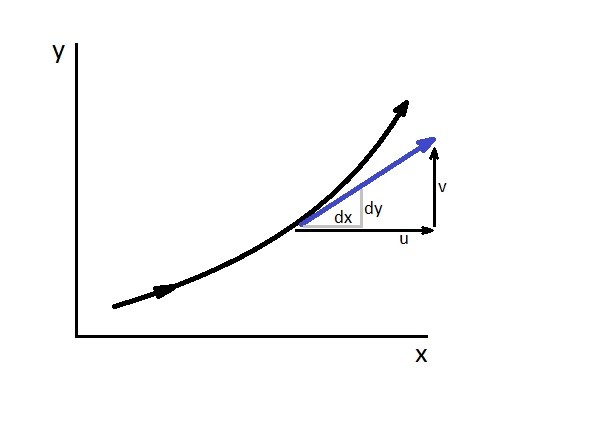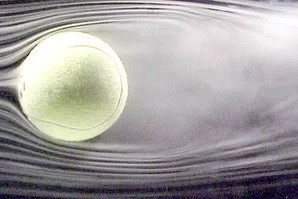Streamlines, streaklines, and pathlines are used to help you visualize a flow field. So what are streamlines, streaklines and pathlines, and what are they used for? First, you would use a streamline to help visualize an analytical analysis. On the other hand you would use streaklines and pathlines for an experimental analysis.
Streamlines
First let’s talk about streamlines. As mentioned above streamlines are generally used to describe the flow field for an analytics problem. It will always be tangent to the velocity field. As a result if you are analyzing a flow that is steady the streamlines will remain fixed. As a result the fluid particles will always follow the same path. On the other hand streamlines can change with time if the flow is unsteady. To determine where the stream lines are you would integrate the equations that define the lines that are tangent to the velocity field.
$\frac{dy}{dx}=\frac{v}{u}$

If you were to inject die or smoke you will be able visually see streamlines for steady flow situations. However, if the flow is unsteady, you will not be able to see the streamline since it will be changing with time.
Streaklines
Streaklines are used in a laboratory setting to observe fluid particle as they pass through a common point. In order to observe streaklines within a fluid you will first have to mark the fluid in some way. This can be accomplished by injecting neutrally buoyant smoke in air, or dye in water. One this is accomplished you would than take instantaneous photographs. These photographs in turn will capture an instant in time showing how the smoke or dye is moving through the fluid. As a result you will be seeing streaklines.
When the flow is steady the streaklines should remain the same and will correlate with the streamline that you can calculate analytically. However, for unsteady flow the streaklines will change with time. As a result for unsteady flow the streakline will be different than the streamline.

Pathlines
Finally, pathlines are another way to observe a fluid particles motion in a laboratory setting. However, unlike a streaklines, which observes all fluid particles passing through a certain point, a pathline observes an individual fluid particle. To do this an individual fluid particle would be marked. After the fluid particle is marked you would than take a time exposure photograph of the particle to observe its motion.
If the flow is steady than the pathline that the particle takes will be the same as streakline of other particle passing through point the particle was introduced. It will also be the same as the analytical streamline. However, if the flow were to become unsteady, there will be no correlation between streamlines, streaklines, and pathlines.